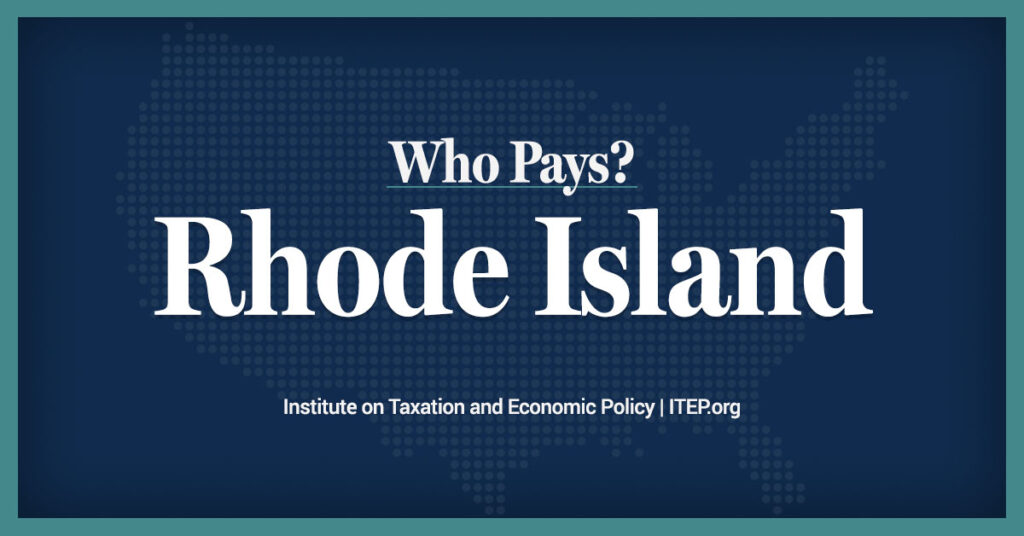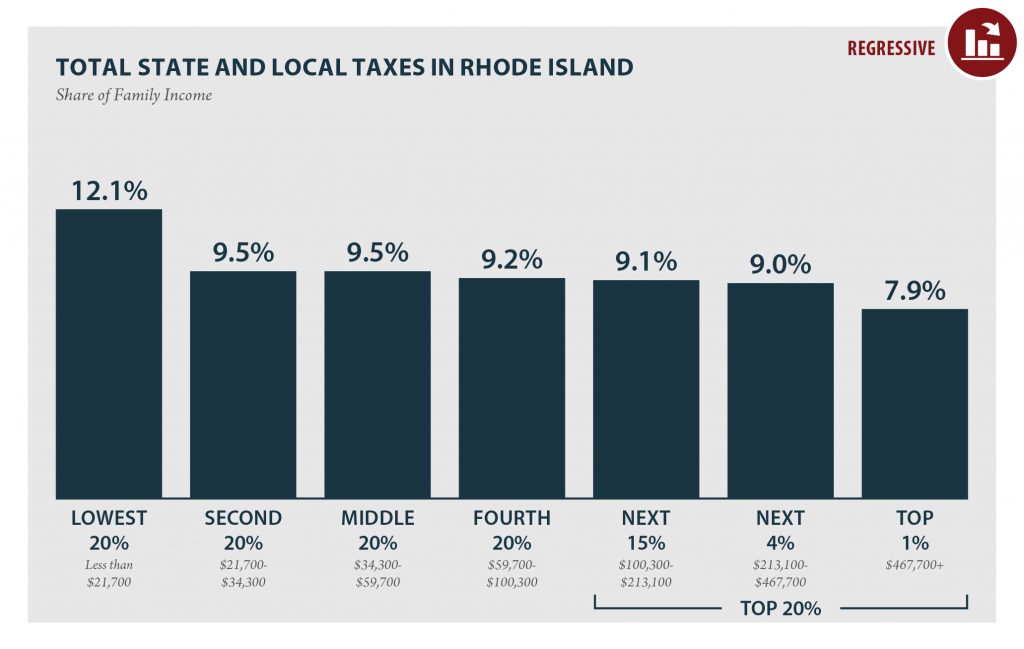Published online Nov 24, 2009
Study: R.I. taxes take most from poorest
Poor pay 11.9% of income; offsets cut richest’s share to 5.6%
By Ted Nesi
PBN Web Editor
PROVIDENCE – Rhode Island’s poorest residents pay more than double the amount of taxes that the state’s wealthiest residents do as a share of income, a new study has found.
Rhode Island families making less than $17,000 a year paid 11.9 percent of their 2007 income in state and local taxes, according to the study, which examined state and local taxes paid as a share of 2007 income, adjusted for policy changes through last month.
At the other end of the spectrum, the top 1 percent of earners – who made an average of $1.2 million in 2007 – paid 5.6 percent of their income in taxes when the federal deduction for state and local taxes is taken into account. Without the federal offset, the wealthiest Rhode Islanders paid 7 percent of their income in state and local taxes.
The study was conducted by the Institute on Taxation and Economic Policy, a Washington, D.C.-based research group that is affiliated with Citizens for Tax Justice, a nonprofit organization partly backed by organized labor.
With Rhode Island facing a $220 million budget shortfall in the current fiscal year and more large deficits in the years to come, lawmakers likely will be asked to re-examine the mix of taxes and fees used to pay for government in the state.
The bottom 60 percent of Rhode Island families – those who earned up to $51,000 in 2007 – paid at least 10 percent of their income in state and local taxes after the federal offset. The bottom 20 percent, which paid 11.9 percent, did not benefit from the offset.
The fourth quintile of families – those who earned between $51,000 and $85,000 in 2007 – paid 9.5 percent of their income in state and local taxes. The next 15 percent (with average earnings of $113,000) paid 8.5 percent after the federal offset. The next 4 percent ($248,100 in average earnings) paid 8.1 percent after the offset.
Most of the study’s findings about Rhode Island mirrored the results nationally, mainly because of the way the three main sources of revenue – income, property and sales taxes – hit different income groups.
Income taxes are progressive in Rhode Island. The top 1 percent paid 4.4 percent of their $1.2 million average earnings in income taxes. The bottom 20 percent, who earned an average of $9,500, paid no income taxes, while the next 20 percent paid 1.3 percent of their $23,500 average earnings in income taxes.
The study noted that Rhode Island has reduced the top income tax rate for wealthier families by implementing a flat tax, which has resulted in the state getting a larger percentage of income-tax revenue from poorer residents.
Property taxes take the most from the middle and upper middle classes, the study found. Families who earned between $51,000 and $85,000 in 2007 paid 4.4 percent of their income in property taxes, and the next group – with earnings between $85,000 and $167,000 – paid 4.3 percent in property taxes.
Sales and excise taxes take the most from those with the lowest income. The bottom 20 percent of earners paid 8 percent of their income in sales and excise taxes. The next 20 percent ($23,500 in average earnings) paid 5.4 percent, and the 20 percent after that ($41,700 average earnings) paid 4.7 percent.
Compared with residents of other states, Rhode Islanders in all but one income group paid a significantly larger share of their income in state and local taxes in 2007. The exception was the second quintile of taxpayers ($23,500 in average earnings) who paid 10 percent, nearly matching the 9.9 percent national average.
The Institute on Taxation and Economic Policy’s report focused only on tax revenue, which made up 71.5 percent of state and local revenue in Rhode Island in fiscal 2007. Non-tax revenue such as fees accounted for the rest.
Rhode Island, like most states in the Northeast, is much more dependent on property taxes than states are nationwide.
The study found that property taxes made up 29.3 percent of total state and local tax and non-tax revenue in Rhode Island in fiscal 2007, compared with 20.6 percent nationally.
By contrast, Rhode Island got less from the sales tax, which made up 20.5 percent of total state and local revenue here, versus 23.6 percent nationwide. “Other” taxes made up 2.8 percent of revenue here, just half the 5.6 percent the category accounted for nationally.
The income tax’s share of revenue was nearly the same, at just under 19 percent, in Rhode Island as in the nation as a whole.
Non-tax revenue, which made up 28.5 percent of total state and local revenue here, was less than the 31.5 percent average for that category





